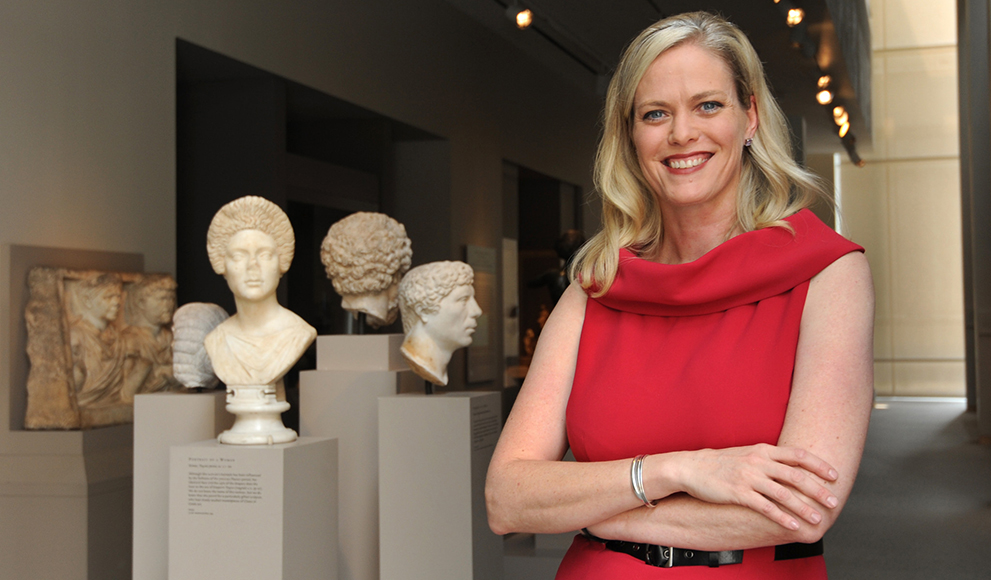Spring Event Highlighted Alumna’s Path From Wellesley to Post as the First Female Executive Director of Baltimore's Walters Art Museum

Julia Marciari-Alexander '89 sees a bright future for women in the art world. This spring, Marciari-Alexander, the first female executive director of the of the Walters Art Museum in Baltimore, visited campus for a student-organized event to share her experiences and discuss the path that took her "from Wellesley to the Walters."
The event was organized by students in the Art History Club. Sophie Kerwin '16, who was club president, said the group was reconstituted this past year to foster a sense of community among students and faculty within the Art History department through planning art and art history-related events on and off campus. "We aim to make students aware of the exciting and diverse study and career opportunities in the art world," said Kerwin. "We couldn't think of a better guest to speak to that than [Marciari-Alexander]."
Marciari-Alexander, who is one of many Wellesley alumnae leading in the museum space, studied art history at Wellesley then went on to receive her MA and PhD in the History of Art at Yale. She has more than 15 years of experience in museum operations, including exhibitions, education, community outreach, publications and management. She previously worked for the Yale Center for British Art, where she served first as a curator and later as Associate Director of Programmatic Affairs and Associate Director for Exhibitions and Publication, and the San Diego Art Museum, where she served as the Deputy Director for Curatorial Affairs.
"At all of these institutions, [Marciari-Alexander] has promoted curatorial and scholarly initiatives that create fresh innovative experiences for viewers as well as community outreach and education programs that eliminate barriers and make museums more accessible," Kerwin said.
Kerwin added, "We thought she would be a terrific model for Wellesley students considering pursuing a career in the arts. Her success is especially impressive because while women are well-represented in the art and museum world in general, they are still underrepresented in leadership positions." Kerwin cited a study from the Association of Art Museum Directors which shows that women run just a quarter of the largest art museums in the United States and Canada, and they earn about a third less than their male counterparts.
Kerwin said Marciari-Alexander discussed how her Wellesley education inspired her to pursue a career in museums, pointing to the interdisciplinary nature of her education. "She remembered the 'Cluster Program'," Kerwin explained, "in which students examined a single period (in her case the Medieval and Renaissance period) through the multiple lenses of art, music, and philosophy."
As a result of this program, Marciari-Alexander told event attendees that she began to view the art she studied not as individual objects but as a total experience. She shared that this understanding of art is what led her to be interested in museums as spaces in which viewers encounter art in particular ways. Kerwin said, "Throughout her career, she's contributed to building those spaces and enhancing visitor experiences."
The Wellesley News covered the visit in an April article entitled, "Julia Marciari-Alexander sees a bright future for women in the art world."
